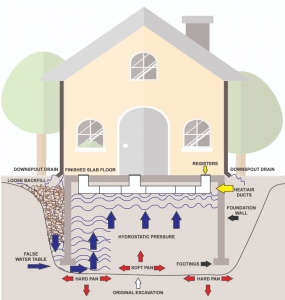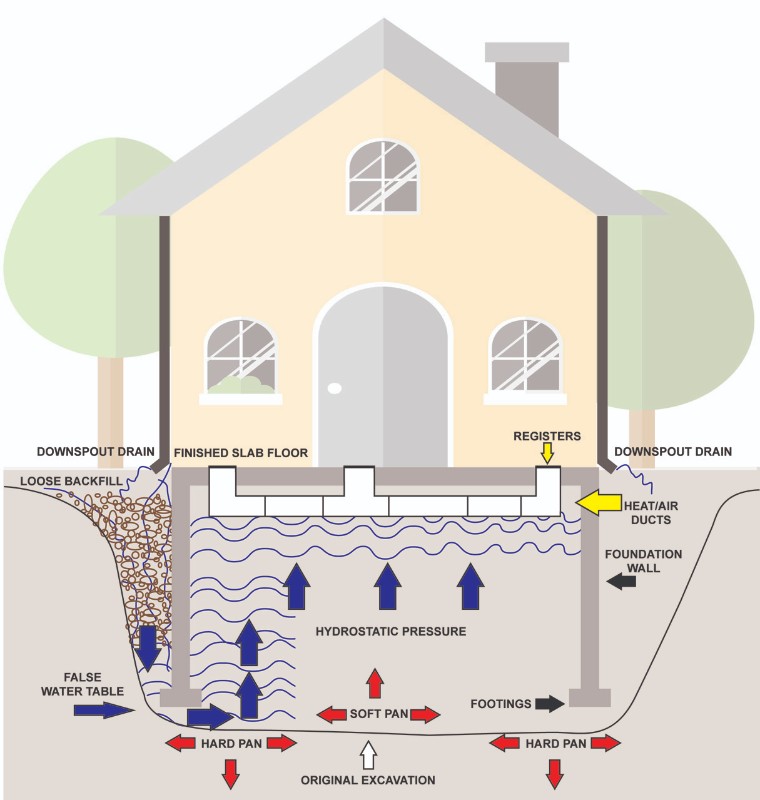If you discover water in your underground air ducts, the first question you will probably ask is “how did water get in my ducts?”  The answer is tricky. Some homes naturally sit on high water tables. Others sit on a “false water table.”
The answer is tricky. Some homes naturally sit on high water tables. Others sit on a “false water table.”
Home excavation begins with a large saucer-shaped hole dug in virgin, hard-packed soil. Loosely-packed dirt bedded around the poured foundation allows water to easily penetrate and travel through it. The result is seepage under and around the foundation. With no place to go, the water accumulates and rises, exerting hydro-static pressure into all underground areas. It enters ductwork through cracks in joints and seams of the pipes and plenum.
There are signs that your home may be sitting on a false water table. These include increased humidity, moisture accumulation on windows, gurgling when the system is on, decreased air flow and lastly, a musty smell.
If you’re noticing any of the above signs, it’s a good idea to have an underground air duct inspection performed. First, a camera goes through the length of your air ducts. Next, the camera records and identifies all problem areas. Third, an inspection report and copy of your video are sent to you. Any good company who performs video inspections should give you a copy of the video, along with a full assessment report of the problems and recommended solutions.

